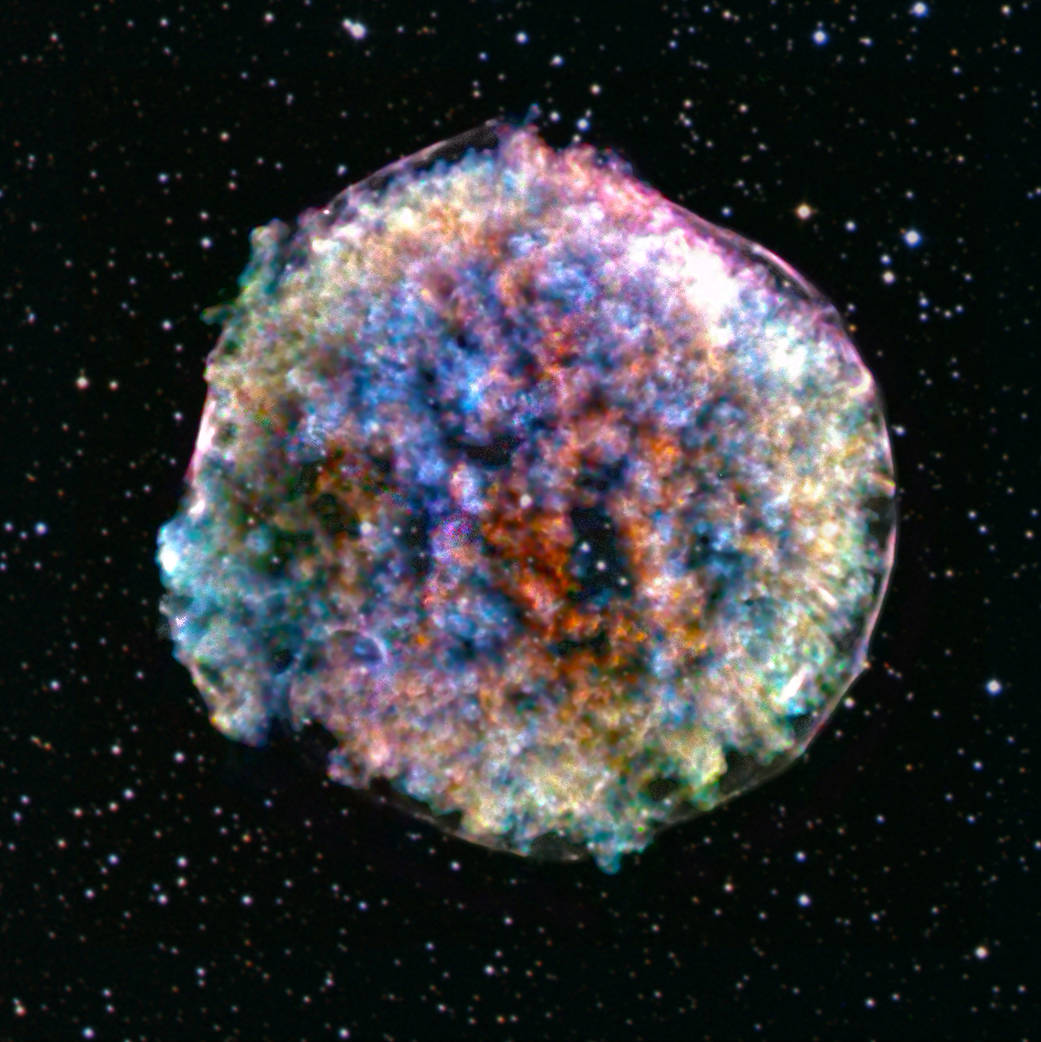第谷超新星:恒星的死亡
In 1572, Danish astronomer Tycho Brahe was among those who noticed a new bright object in the constellation Cassiopeia. Adding fuel to the intellectual fire that Copernicus started, Tycho showed this “new star” was far beyond the Moon, and that it was possible for the universe beyond the Sun and planets to change.
Astronomers now know that Tycho’s new star was not new at all. Rather it signaled the death of a star in a supernova, an explosion so bright that it can outshine the light from an entire galaxy. This particular supernova was a Type Ia, which occurs when a white dwarf star pulls material from, or merges with, a nearby companion star until a violent explosion is triggered. The white dwarf star is obliterated, sending its debris hurtling into space.
In its two decades of operation, NASA’s Chandra X-ray Observatory has captured unparalleled X-ray images of many supernova remnants.
Chandra reveals an intriguing pattern of bright clumps and fainter areas in Tycho. What caused this thicket of knots in the aftermath of this explosion? Did the explosion itself cause this clumpiness, or was it something that happened afterward?
This latest image of Tycho from Chandra is providing clues. To emphasize the clumps in the image and the three-dimensional nature of Tycho, scientists selected two narrow ranges of X-ray energies to isolate material (silicon, colored red) moving away from Earth, and moving towards us (also silicon, colored blue). The other colors in the image (yellow, green, blue-green, orange and purple) show a broad range of different energies and elements, and a mixture of directions of motion. In this new composite image, Chandra’s X-ray data have been combined with an optical image of the stars in the same field of view from the Digitized Sky Survey.
Image Credit: X-ray: NASA/CXC/RIKEN & GSFC/T. Sato et al; Optical: DSS
1572年,丹麦天文学家第谷·布拉赫(Tycho Brahe)在仙后座发现了一个明亮的新天体。第谷为哥白尼所引发的智慧之火提供了燃料,第谷证明了这颗“新星”远在月球之外,太阳和行星之外的宇宙也有可能发生变化。
罗诺莫斯现在知道第谷的新星根本不是新的。更确切地说,它预示着超新星中一颗恒星的死亡,这颗恒星的爆炸如此明亮,其亮度甚至超过了整个星系发出的光。这颗特别的超新星是Ia型超新星,当一颗白矮星从附近的伴星拉出物质,或与之合并,直到引发剧烈的爆炸。白矮星被毁灭了,它的碎片被抛向太空。
在20年的运行中,美国宇航局的钱德拉X射线天文台捕捉到了许多超新星残骸的无与伦比的X射线图像。
钱德拉揭示了第谷明亮的团块和暗淡的区域的有趣模式。是什么造成了这次爆炸后的混乱局面?爆炸本身造成了这种笨拙,还是后来发生了什么?
这张来自钱德拉的第谷的最新照片提供了线索。为了强调图像中的团块和第谷的三维性质,科学家们选择了两种狭窄范围的X射线能量来分离远离地球的物质(硅,红色)和向我们移动的物质(硅,蓝色)。图像中的其他颜色(黄色、绿色、蓝绿色、橙色和紫色)显示了各种不同的能量和元素,以及运动方向的混合。在这张新的合成图像中,钱德拉的X射线数据与来自数字化巡天观测的同一视场的恒星光学图像相结合。
图片来源:

